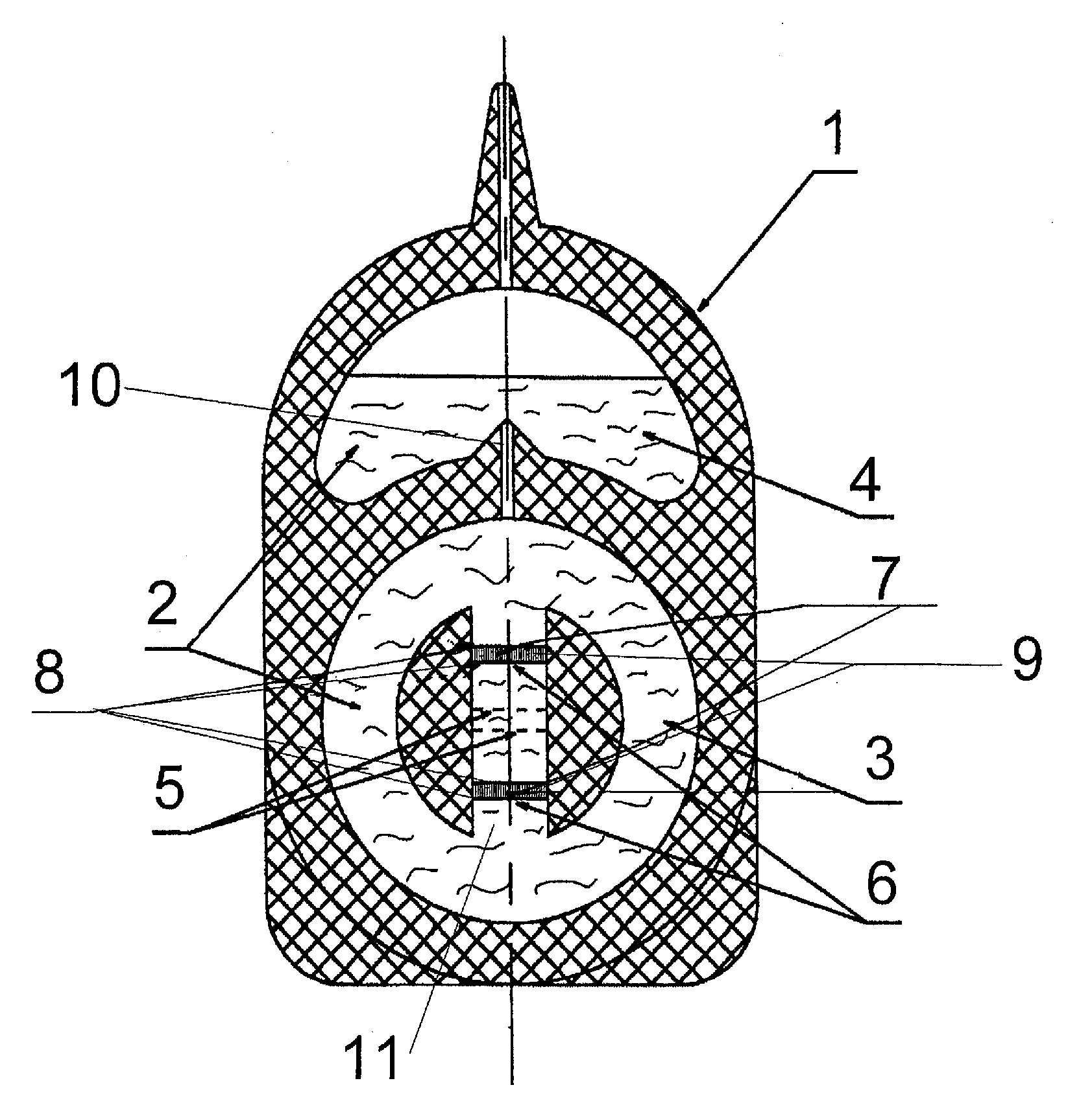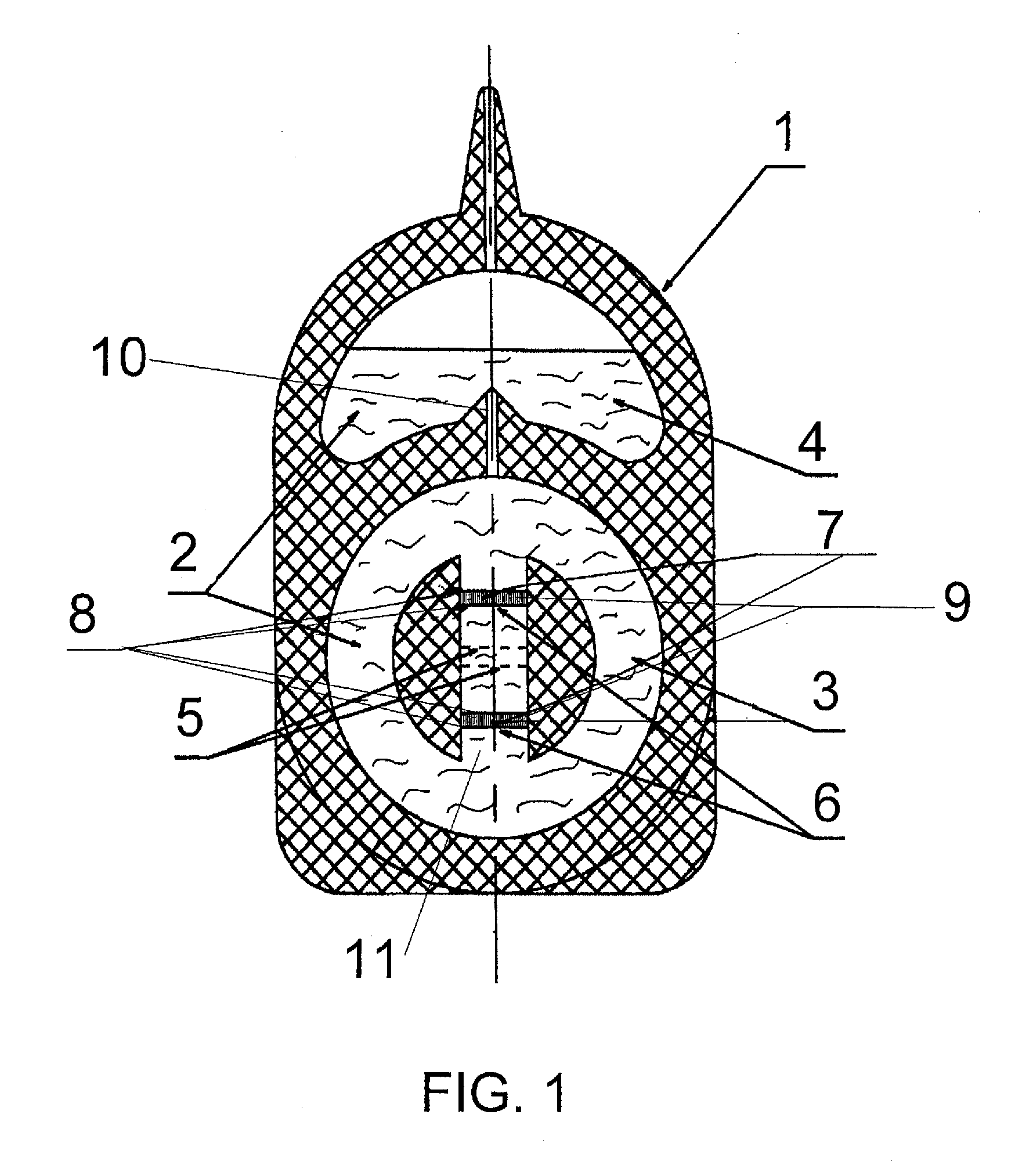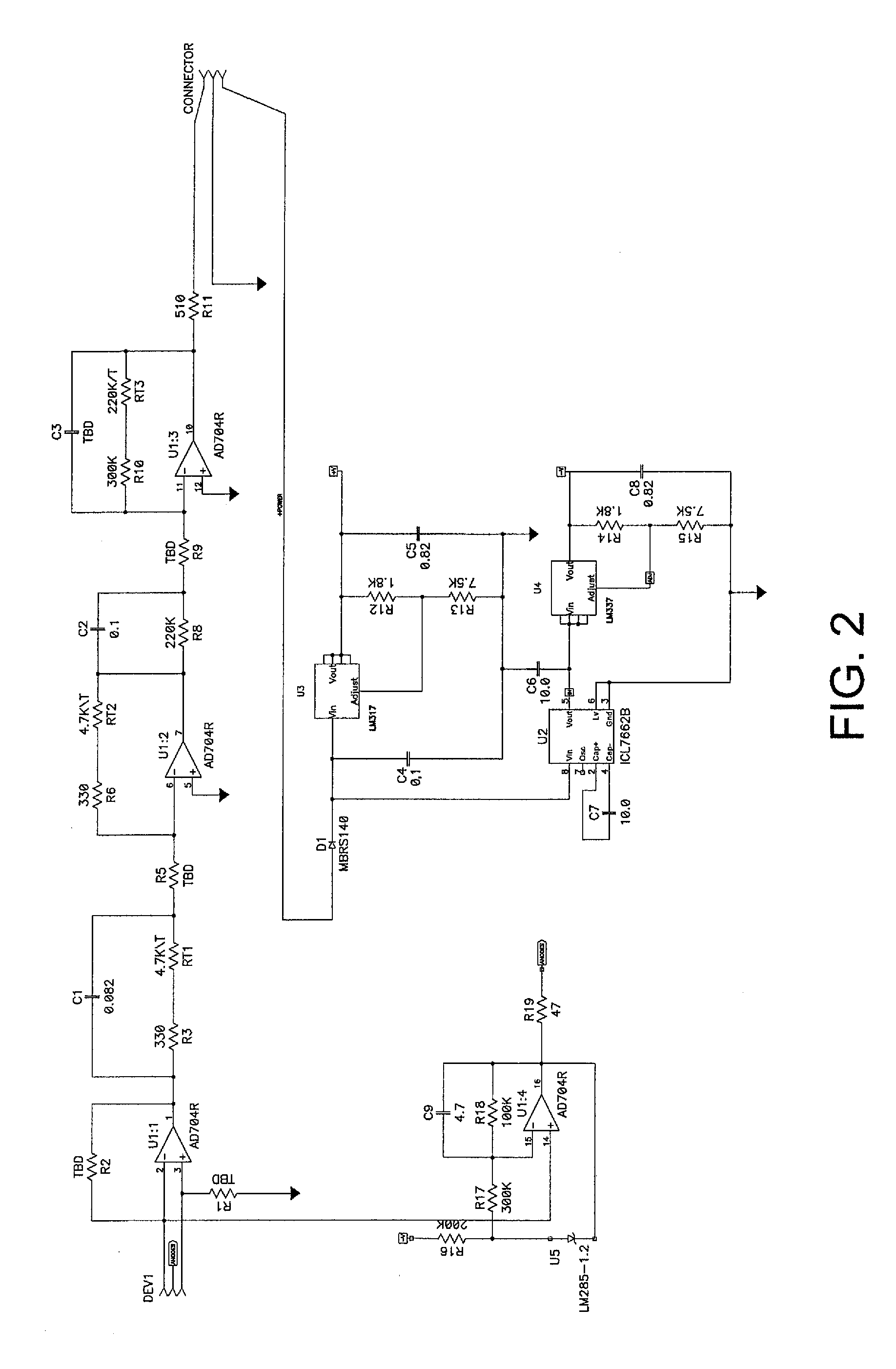Convective Accelerometer with "Positive' or "Negative" Inertial Mass
a technology of inertial mass and convective accelerometer, which is applied in the direction of instruments, measurement devices, surveying and navigation, etc., can solve the problems of inability to measure linear acceleration, inability to move, and inability to move, etc., to achieve low power consumption, wide frequency and dynamic range, and small size
- Summary
- Abstract
- Description
- Claims
- Application Information
AI Technical Summary
Benefits of technology
Problems solved by technology
Method used
Image
Examples
Embodiment Construction
[0021]This invention provides a small, lightweight, inexpensive convective accelerometer that has wide frequency and dynamic ranges, low power consumption, and the ability to measure constant acceleration. As described herein, the convective accelerometer of this invention can measure acceleration by using an electric field to create density gradients in a liquid agent and then monitoring the motion of the inhomogeneous liquid agent when an external acceleration is applied.
[0022]FIG. 1 shows a schematic diagram of a convective accelerometer according to one embodiment of the invention. The convective accelerometer includes a sealed housing 1 that houses a liquid agent 2 (a liquid electrolyte) in a toroidal cavity 3 and a reservoir cavity 4. The toroidal cavity 3 and reservoir cavity 4 are fluidly interconnected by capillary 10. The toroidal cavity 3 further includes a channel 11 having its major axis located in the plane defined by the toroidal cavity 3. In preferred embodiments, th...
PUM
 Login to View More
Login to View More Abstract
Description
Claims
Application Information
 Login to View More
Login to View More - R&D
- Intellectual Property
- Life Sciences
- Materials
- Tech Scout
- Unparalleled Data Quality
- Higher Quality Content
- 60% Fewer Hallucinations
Browse by: Latest US Patents, China's latest patents, Technical Efficacy Thesaurus, Application Domain, Technology Topic, Popular Technical Reports.
© 2025 PatSnap. All rights reserved.Legal|Privacy policy|Modern Slavery Act Transparency Statement|Sitemap|About US| Contact US: help@patsnap.com



